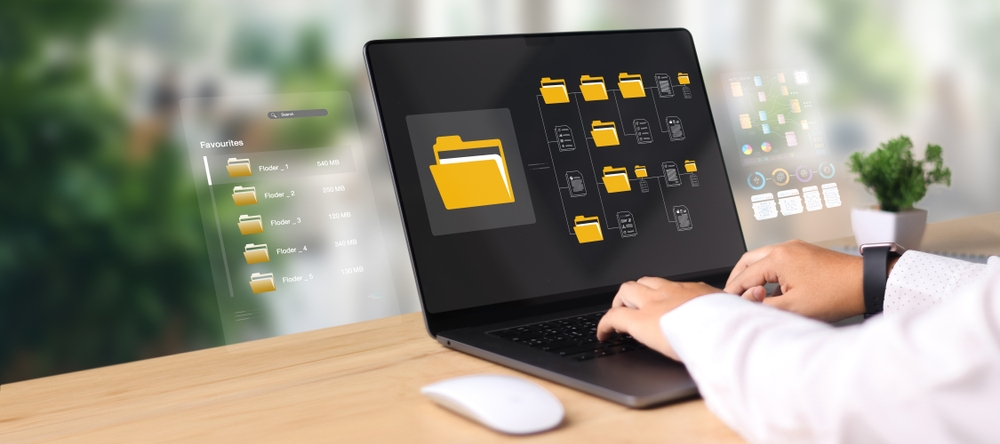Between online classes, emails, and endless downloads, digital clutter builds up faster than we realize. When your files are scattered and your notes are disorganized, productivity drops and stress rises. Staying digitally organized isn’t just about neat folders; it’s about creating systems that simplify how you work and think. With the right structure, tools, and habits, you can manage information efficiently, free up mental space, and focus more energy on learning and creating.
Start With a Clear Digital Structure
Digital organization begins with intentional structure. Just like a tidy workspace, a well-organized file system helps you locate materials quickly and work with focus. Create a consistent folder hierarchy—by semester, subject, or project—and stick to clear, descriptive naming conventions. For example, “BIO101_LabReport1” is far more useful than “Document3.”
Regularly declutter by archiving old materials and deleting duplicates. Keep active files front and center while storing older work in a dedicated “Archive” folder. This makes it easier to manage your workload without losing valuable records. A structured digital space mirrors the calm of a tidy desk—helping you think clearly and work confidently every day.
Use Note-Taking Tools That Match Your Style
Everyone learns differently, so your digital note-taking method should fit your natural workflow. Apps like Notion, Joplin, or OneNote allow you to organize ideas, link related topics, and store multimedia notes—all in one searchable space. For visual learners, tools that support drawing or mind mapping, like GoodNotes or Milanote, can make studying more intuitive.
The key is consistency. Choose one platform and commit to it rather than scattering notes across multiple apps. Keep separate notebooks or sections for each subject, and use tags for quick retrieval. Organized notes save time when reviewing for exams or collaborating with classmates, turning chaos into clarity with just a few thoughtful systems.
The Power of Naming and Tagging
Search tools are powerful, but they can’t fix vague file names. A strong naming system is one of the simplest yet most overlooked organizational tools. Always include key details like course name, date, and topic—for example, “ENG202_EssayOutline_March2025.” This consistency makes it easier to search and sort files later.
Tagging adds another layer of efficiency. Many platforms let you assign keywords or color codes to documents, helping you quickly group files by theme or priority. Whether it’s “To Review,” “Complete,” or “Pending,” tags visually guide your workflow. Good digital labeling habits eliminate wasted time scrolling through folders, allowing you to focus on what matters most—your actual work.
Cloud vs. Local Storage: Which Is Better?
Choosing between cloud and local storage depends on your needs for access, security, and speed. Cloud storage (like Google Drive, Dropbox, or OneDrive) offers convenience—you can access your files from any device, collaborate in real time, and enjoy automatic backup protection. It’s ideal for students and professionals who work across multiple devices or need to share projects easily.
Local storage, such as an external hard drive or your computer’s built-in SSD, provides faster access and privacy without depending on an internet connection. It’s best for large media files, sensitive data, or offline work. For most users, a hybrid approach is ideal: store critical files locally and back them up in the cloud for both safety and flexibility.
Automate Where You Can
Automation can save hours of repetitive work. Tools like Zapier, IFTTT, or built-in app automations can automatically sort emails, upload files to specific folders, or sync notes between devices. For instance, you can set up rules so that every downloaded document automatically moves into a “To Organize” folder for later review.
Email filters, recurring reminders, and scheduled backups also streamline daily management. When automation handles the small tasks, your brain can focus on creativity and learning. Even small automations—like automatically naming screenshots or syncing calendar events—reduce digital friction, leaving you with more time and mental bandwidth for meaningful work.
Make Regular Maintenance a Habit
Organization isn’t a one-time project—it’s a routine. Set aside a few minutes each week to review your digital spaces. Delete old downloads, back up key files, and tidy your desktop. Treat it like digital self-care: maintaining your systems prevents clutter from piling up and keeps stress low.
Monthly check-ins can help too. Review your folder structure, update your backups, and archive what’s no longer active. The goal isn’t perfection—it’s consistency. A few small, intentional habits are all it takes to maintain a streamlined digital environment that supports your goals rather than distracting from them.
Clarity in the Cloud and Beyond
Digital organization isn’t about perfection—it’s about peace of mind. A well-structured system saves time, reduces frustration, and creates the mental space needed to think clearly and stay creative.
When your files, notes, and tools work together seamlessly, your technology becomes an ally rather than a burden. Whether you prefer cloud convenience, local control, or a mix of both, the best system is the one that keeps you grounded, focused, and ready for whatever comes next.

